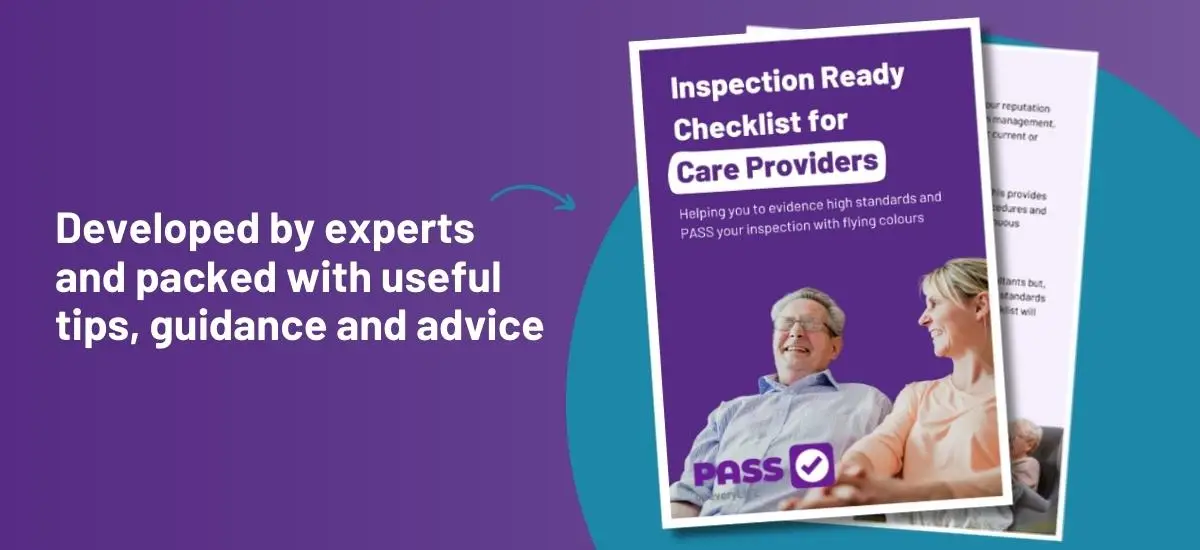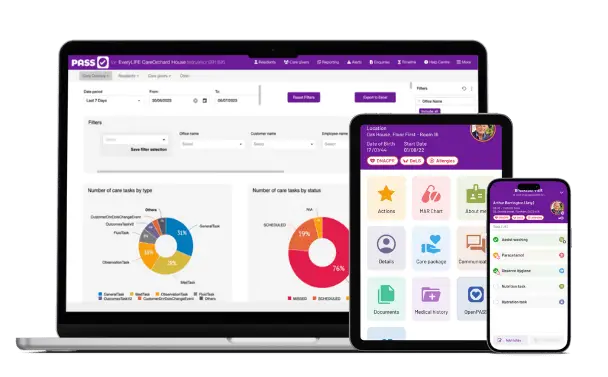Care Inspection Guide & Checklist
Preparing to undergo an inspection? Download our free Care Inspection Guide and Checklist!

We understand the importance of maintaining high-quality care standards. Audits not only ensure compliance with the CQC fundamental standards and other regulators, such as the Care Inspectorate Wales and the Care Inspectorate Scotland, but also make sure that your organisation is being run as effectively as possible.
How to prepare for a CQC inspection in domiciliary care
To support you in this endeavour, we have created a comprehensive Care Inspection Guide and Checklist that covers all essential aspects of care provision. Download our Inspection Ready Checklist now to enhance the care you deliver and streamline your inspection processes.
More helpful resources:
How to succeed in your next care inspection.
How home care software will help you improve your CQC rating
What our free care inspection guide includes:
✔️ Excel in compliance and inspections
Our checklist is meticulously curated to help you meet regulatory requirements and prepare for care inspections. With this resource in your hands, you can proactively identify areas that need improvement, allowing you to address them before an inspection takes place.
✔️ Enhance quality of care
By utilising our checklist, you can ensure that all critical care areas are evaluated thoroughly. This enables you to maintain and enhance the quality of care provided, promoting the wellbeing and satisfaction of your service users.
✔️ Save time and resources
Our checklist is designed to streamline your inspection process, helping you save valuable time and resources. It provides a clear framework, allowing you to assess various aspects of care provision efficiently, identify areas of concern, and develop action plans for improvement.

Need support with your inspection?
Book your personal tour today.
Care inspection FAQs
What is the CQC inspection framework?
The CQC (Care Quality Commission) Inspection Framework is a set of guidelines and criteria that the CQC uses to evaluate the quality of care provided by healthcare services in England. This framework revolves around five key questions: is it safe? Is it effective? Is it caring? Is it responsive? And is it well-led? The main goal is to ensure that healthcare providers are upholding high standards of care that meet the needs of the people they serve.
What are the different types of CQC inspections?
There are four main types of CQC inspections: Comprehensive, Focused, Targeted and Combined.
Comprehensive Inspections: These are in-depth evaluations that cover all aspects of a healthcare service. It includes interviews, site visits, and document reviews.
Focused Inspections: These are more targeted and address specific issues or follow up on previous inspections. They may not cover all five key questions.
Focused Inspections: These inspections have a narrower focus and are intended to assess a particular risk or concern.
Combined Inspections: These types of inspections are aimed at providers that deliver services across both health and social care sectors, for example, mental health, community health and care homes.
What is the key criteria of a CQC inspection?
- Safe: Are patients protected from abuse and avoidable harm?
- Effective: Is the care provided based on the latest guidelines and is it achieving good outcomes?
- Caring: Do staff treat patients with compassion, dignity, and respect?
- Responsive: Are services organised to meet the needs of patients?
- Well-led: Does the leadership contribute to high-quality care?
Inspectors gather evidence through observations, interviews, and document reviews to assess these criteria.
How often is a CQC inspection?
The frequency of CQC inspections varies depending on the type of service and its previous inspection ratings. High-risk services may be inspected more frequently, sometimes annually or even sooner if there are serious concerns. Lower-risk services may go several years between inspections. The CQC also conducts unannounced inspections to ensure standards are consistently maintained.
